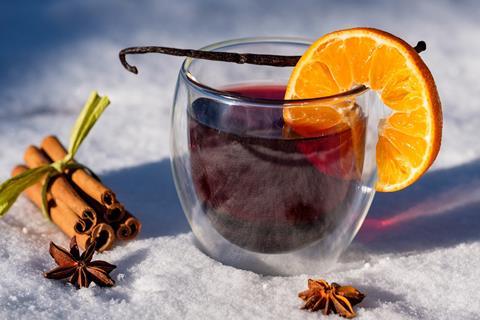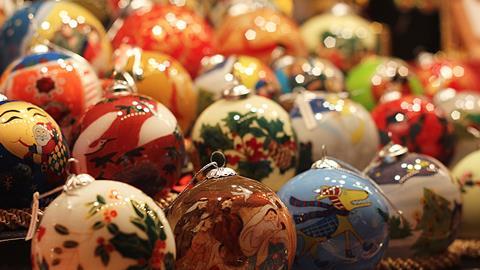When asked to think of microbes associated with food, those which come to mind may have connotations with being ‘bad’.
Clostridium, Salmonella, Campylobacter, and E. coli are all associated with food poisoning, and spikes in the incidence of food poisoning are indeed often recorded during the festive period. However, not all microbes are harmful. Without microbes, many of our favourite festive foods would cease to exist. With Christmas approaching, it’s time to delve into the microbiology of some iconic festive food.
What’s on your cheese board?
Cheese is a staple diary product scattered across tables during the festive season, whether in cauliflower cheese or an elegant charcuterie board. Cheese production relies upon bacteria and fungi to produce particular flavours and textures for cheeses, giving them distinct and unique profiles.

Cheddar cheese production involves two main cultures: the starter culture for the initial lactose fermentation, for example, Lactococcus lactis. Secondly, a ripening culture can be opted for to develop the flavours of the cheese. Cheddar cheese production utilises mesophilic culture and optimally grows bacteria best between 70-100 degrees Fahrenheit.
Camembert and brie are both creamy and soft mold-ripened cheeses. These cheeses are often characterised by the bloomy rind on the surface of Camembert and Brie, which is due to Penicillium molds such as P. camemberti, which also contributes to the development of the flavour and texture of the cheeses. Lactic acid bacteria are crucial to fermentation, converting lactose to lactic acid, which acidifies the cheese, creating an environment for mold to thrive.
Blue cheeses like Stilton, Roquefort, and Gorgonzola are other cheeses that harness a combination of microbes for distinctive taste profiles and textures. P. roquefort is the crucial mold responsible for creating the blue veins; the mold grows in the air pockets found in the cheese. Again, this cheese utilises lactic acid bacteria, which acidifies the cheese to an ideal pH for P. roquefort to grow.
Meaty microbiology
Salami, chorizos and cabanossi are prime examples of fermented sausages on our festive food boards. All starting with lactic acid bacteria such as Lactobacillus or pediococcus, the variety of taste profiles is facilitated by cultures that are specially controlled during fermentation. The starter cultures can differ from region to region, and environmental factors such as temperature and humidity during fermentation can play a role in changing the flavours of the meat.

Yuletide Yeasts
Bread is the perfect addition to any cheese and meat offered during the festive period, or to make leftover Christmas dinner rolls. Feeding off the range of carbohydrates in flour, baker’s yeast is used as a rising agent, producing tiny bubbles of carbon dioxide which get trapped in the dough, causing the bread to rise and expand in size as more carbohydrates are broken down, producing alcohol and carbon dioxide in the process. In addition to generic savoury bread such as white bread and sourdough, yeast is used in the Italian Christmas dessert Panettone.

The festive period is a time when many get merry on wine and beer, and these are other festive favourites that require microbes for their production. Strains are selected for specific characteristics that are needed for the different types of beverages.
Wine has a complex production process which utilises fermentative yeast and lactic acid bacteria. Yeast such as Saccharomyces cerevisiae is commonly used in wine production, in addition to Oenococcus oeni, a lactic acid-producing bacteria. Selecting high-tolerance yeast strains for wine production is essential to ensure that ethanol production reaches 11-13% v/v.
Alongside wine at the dinner table, beer can be a staple beverage during the festive period. Worts are converted to beer by Saccharomyces strains, through the fermentation of maltose and sugars to ethanol and carbon dioxide. Secondary metabolites from fermentation influence the tasting notes and the various aromas of these beers. Each brewery will have a selection of unique strains used for beer production, which contribute to the final flavours and type of beer brewed; for example, S. pastorianus is used in lager brewing, and S. cerevisiae is used in making ales.

An advent calendar is a perfect way to count down the days till Christmas, and since 1958, chocolate advent calendars have appeared in shops and have become a Christmas tradition worldwide. To develop the natural flavours of chocolate, cacao beans are fermented to produce hundreds of compounds that contribute to the rich flavours that are associated with chocolate. Yeast species such as Saccharomyces, Candida, Pichia, and Hanseniaspora are required in the anaerobic phase of fermentation, producing flavour precursors called esters. After this, Acetobacter is added for the aerobic phase of fermentation, producing acetic acid and synthesising flavour-active compounds, turning beans from bitter to a richer flavour.

Merry Christmas from everyone at The Microbiologist.








No comments yet